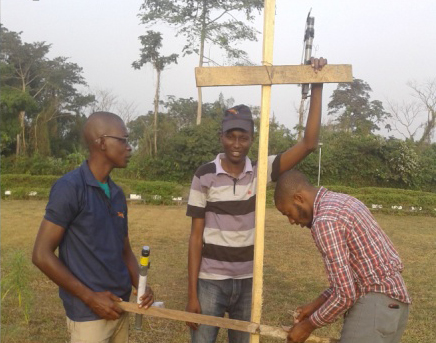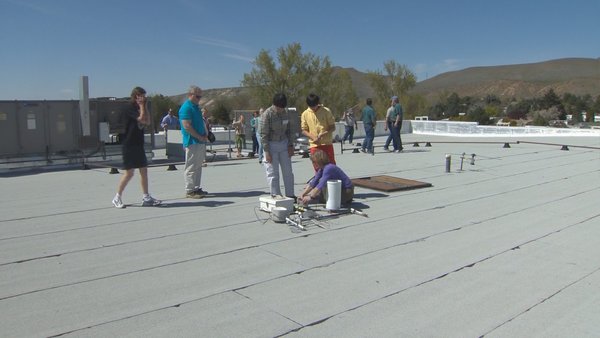
One of the biggest advantages of automatic weather stations equipped with cellular modems is the low maintenance required to keep them running. Making regular visits to TAHMO stations in remote areas represents a significant cost to the project, so any efforts to increase the stations’ autonomy save both time and money.
TAHMO weather stations use very little power – 5 AA-size batteries typically provide enough power for 6 to 9 months of operation – but batteries must eventually be replaced by a member of the trained field staff. As you might imagine, solar power is a terrific option throughout many parts of sunny Sub-Saharan Africa, and many scientific-grade weather stations use medium-sized solar panels and NiCad batteries to provide their power, but solar panel theft can be a problem in areas not connected to the power grid.
This year, Jon Viducich built low-profile solar chargers for TAHMO stations currently deployed in several East and West African countries. The chargers are based on a very small, high-efficiency panel measuring just 42 mm x 35 mm (1.65 in x 1.38 in), and include electrical components which prevent overcharging and limit power losses during the night. Each charger uses either one or two panels, depending on the number of times per day the station will report its data, and the electrical components are encapsulated in a transparent silicone material and protected by a UV-resistant polycarbonate box. The final product is quite small, reducing its visibility, and installation takes just a few minutes.
TAHMO has worked closely with Decagon on the design of a new weather station prototype, set to debut in 2015, which will include an integrated, low-profile solar panel. In the meantime, though, these small solar panels provide the power we need to keep the stations running, even in the harshest of environments.


